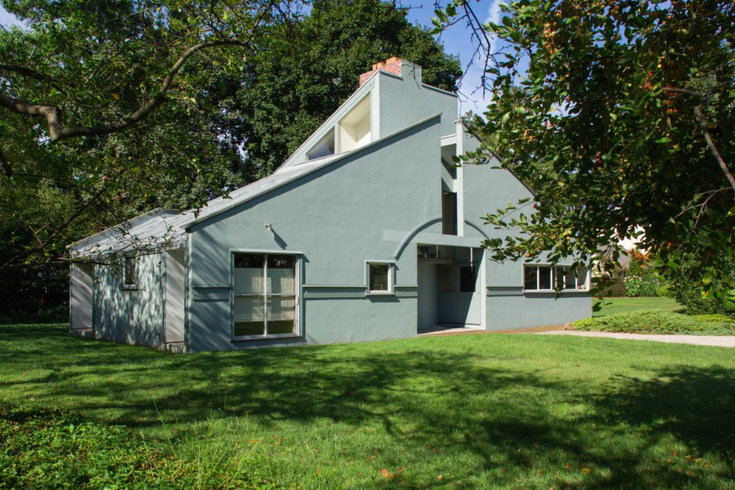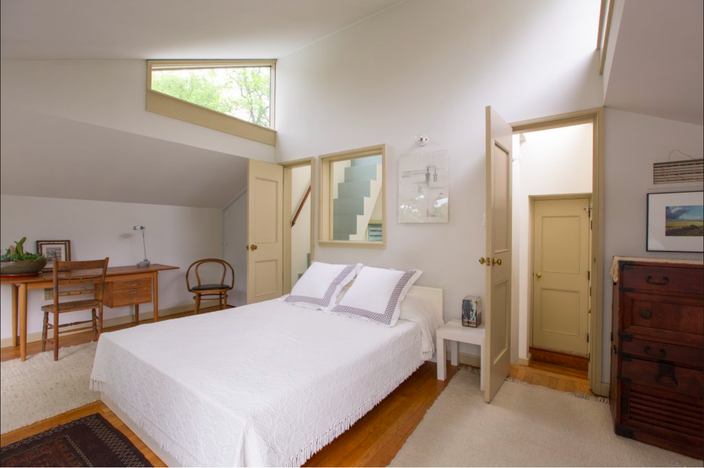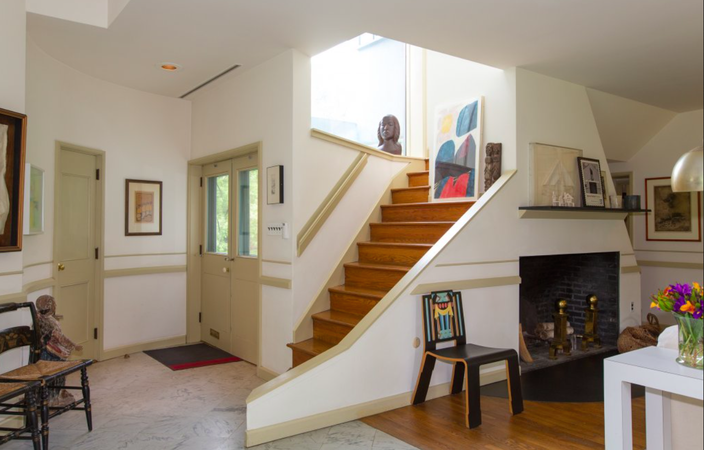
July 16, 2015
 Contributed art/Kurfiss.com
Contributed art/Kurfiss.com
The famed Vanna Venturi House in Chestnut Hill is a classic example of Postmodern architecture.
A groundbreaking home that changed the face of American architecture is now on sale for the first time since 1972.
The Vanna Venturi House in Chestnut Hill, a classic example of Postmodernism that PBS called one of the “10 Buildings That Changed America,” is on sale for $1.75 million by Kurfiss Sotheby’s International Realty. (View the listing here.)
When Robert Venturi built the Vanna Venturi House for his mother in 1964, the standard architectural style demanded purity. Modern homes had to be clean, orderly, functional, with no unnecessary decorative flourishes.
But Venturi wanted his mother’s home to be messy, dynamic, organic. As he proclaimed in his 1966 manifesto "Complexity and Contradiction in Architecture":
“Architects can no longer afford to be intimidated by the puritanically moral language of orthodox Modern architecture. ... I am for messy vitality over obvious unity. I include the non sequitur and proclaim duality.”
Some of the non sequiturs in the house include a staircase that leads to nowhere and a deceptively simple façade that hides the real structural elements within.

The staircase behind this bed leads to nowhere. (Contributed art/Kurfiss Sotheby's International Realty)
Intriguing features on the façade include asymmetrical windows and a fake chimney, which Venturi said he included as a way to give the finger to the architectural establishment. He also painted the house green, simply because someone told him to never paint a house that color.
If it sounds like this house is a mess, it isn’t: Miraculously, it manages to combine simplicity and complexity in a way that leads to true beauty.

The living room of the Venturi House, with a staircase that does, in fact, lead upstairs. (Contributed art/Kurfiss)
Only two families have lived in this house before: the Venturis, of course, and a University of Pennsylvania professor who lived in the home for 41 years until his death, Philadelphia Magazine reports.
Venturi may have said, “don’t trust an architect who’s trying to start a movement,” but that’s exactly what he did. The home stands as a testament to the woman who raised her son to be a brilliant, iconoclastic artist.